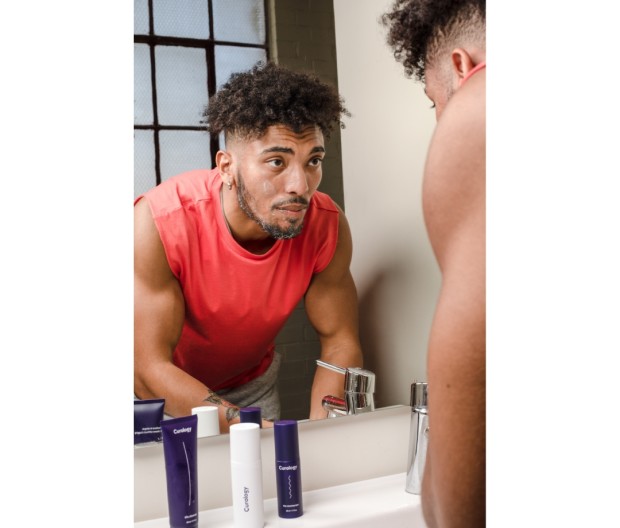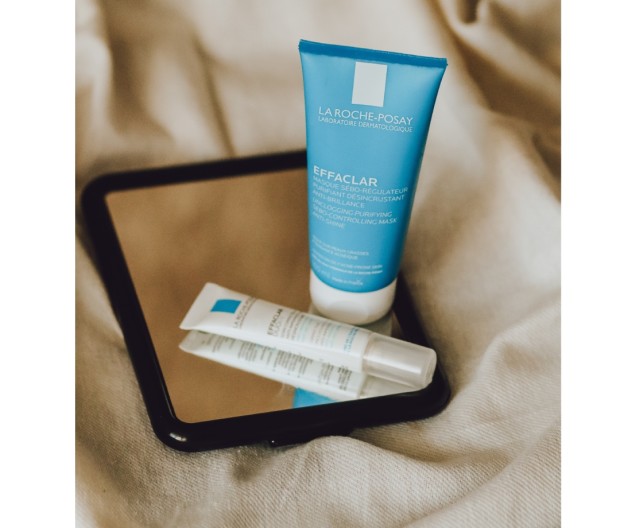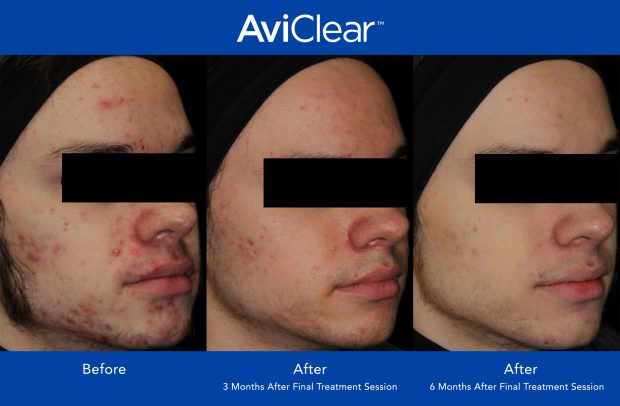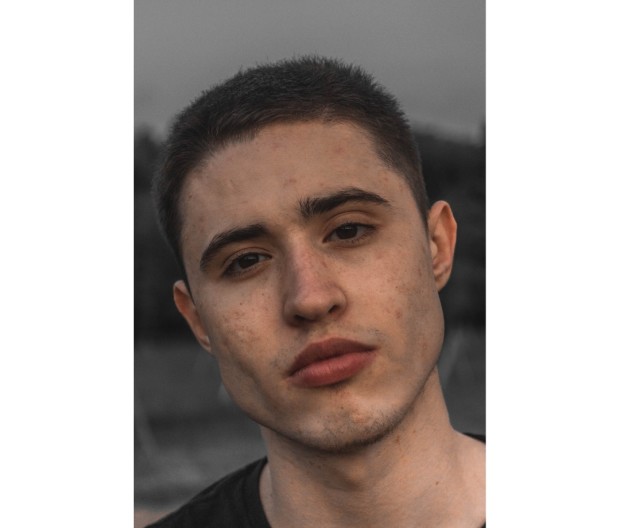[ad_1]
If you’re struggling to figure out how to get rid of acne, you’re not alone. Acne is the most common skin condition in the U.S. and affects up to 50 million Americans annually, according to the American Academy of Dermatology Association.
We’ve all had a poorly timed pimple or 10—sometimes all at once. But the best way to prevent and get rid of acne quickly is to follow a proactive regimen, combining lifestyle changes as well as the best skincare products for treating and preventing pimples, as well as promoting healthy skin (think best face moisturizers and best serums).
If you’re wondering how to get rid of acne overnight, you’ll have to adjust your expectations. Maybe a pimple patch can significantly decompress a cystic pimple, but most solutions aren’t so miraculous.
“Acne does not clear up overnight,” says board-certified dermatologist Dr. Susan Massick of The Ohio State University Wexner Medical Center. “Acne is multifactorial; genetics, stress, environment, hormones, and diet can each play a role in acne.” So, in order to get rid of acne fast, it typically depends on the type of acne, the severity, and the number of solutions already in place.
Related: Best Skincare Products for Men to Use Every Day
Read on for more insight on getting rid of pimples, with advice from Dr. Massick as well as board-certified dermatologist Dr. Carly Roman of Modern Dermatology in Seattle.
Causes of Acne
As Massick explained, acne can be caused by numerous things. These are the most common:
- Genetics: Some people are predisposed to breakouts or one-off blemishes than others.
- Hormones: Testosterone can stimulate oil glands—men tend to have oilier skin than women—and any unusual hormonal fluctuations or ongoing imbalances can cause an increase in clogged pores.
- Stress: Stress of any kind can spike your cortisol levels. This in turn increases oil production which—surprise, surprise—can clog pores.
- Environment: Changes in one’s environment (often induced by travel or seasonal shifts) can cause overproduction of oil, or on the other end of the spectrum cause a depletion of moisture.
- Diet: Processed and sugary foods or beverages, alcohol, caffeine, fried food, and dairy are all common acne-inducing foods, and there are plenty of others. This is also where genetics factors in: Some people will react to these more than others.
- Fitness-Focused Diets and Supplements: This one merits having a separate bullet. Massick notes that heavy keto diets, whey proteins, and any muscle-building supplements (including creatine and steroids) can all increase acne.
- Hygiene: It’s important to wash your skin each day, and especially first thing in the morning and last thing before bed (when beginning your skincare regimen in both cases), and after intense sweating. Wash towels and pillowcases frequently, and anything else that you wear frequently on the skin (like t-shirts and hats). Avoid touching your face, too, with both your hands and your cell phone.
- Smoking: As if you needed another excuse to quit.
Unsplash
Types of Acne
To properly treat or prevent acne, you need to know which type of blemish you’re dealing with.
Comedones: These include blackheads and whiteheads, and form at the surface of the skin, inside the pores when oil or dead skin cells get clogged up around a hair follicle. Blackheads have broached the surface; once your oil secretions (called sebum) oxidizes, it gets that darker color across its head. Whiteheads are closed under a thin layer of skin; they are the ones that are tempting to pop.
Papules and Pustules: These are inflamed forms of acne, wherein the skin around acne becomes reddened, and sometimes the acne fills up with pus (this pus-filled yellowish surface differentiates the pustules from the papules; papules often precede pustules).
Nodules and Cysts: These inflammatory forms of acne reside deeper in the skin, and feel painful even when you aren’t touching them. Any pressure can worsen the situation, too, and these blemishes easily scar since they reside further in the tissue of the skin. The scar can be a temporary dark mark that takes months to disappear, or a permanent “ice pick” scar that never fills in. Both nodules and cysts involve ruptured pores; a cyst involves inflammation that has spread from the pore to additional skin tissue.
Men’s Journal aims to feature only the best products and services. We update when possible, but deals expire and prices can change. If you buy something via one of our links, we may earn a commission.

Unsplash
How to Prevent Acne
Acne prevention involves changes to one’s lifestyle and diet, as well as a solid skincare and hygiene regimen.
Regimen to Prevent Acne
One of the surest ways to prevent acne is to follow a baseline skincare regimen that you can adhere to every single day.
Cleanse: The best foundation of any skincare regimen (not just for acne) is cleansing at least twice a day—after waking up, and again before bed—as well as following any intense sweating. Face washes are a good way to flush away excess oil, sweat, and grime. You can also do a weekly or monthly deep-pore cleansing with a clay or charcoal-powered face mask.
- Our Pick: Jack Black Deep Dive Glycolic Facial Cleanser, $24
Exfoliate: Ridding your skin of excess skin cells is imperative for acne-prone individuals. You can exfoliate twice a week with a physical face scrub (after cleansing), or use an exfoliating serum (as directed) to break down dead skin cells on the surface of the skin and within the pores. A topical retinoid applied at bedtime can also help regularly exfoliate skin cells and prevent clogged pores.
- Our Pick: Brickell Renewing Face Scrub, $22
- Our Pick: The Ordinary Lactic Acid 10% + HA 2% Exfoliating Serum, $9
Moisturize: As the name suggests, a good moisturizer keeps moisture inside pores and prevents skin from becoming dehydrated. You might want to change up your moisturizer from day to night, and from one season to the next; the goal is to never suffocate the pores if it’s too hot or humid, and to provide extra defense when it’s cold or dry. Avoid pore-clogging (comedogenic) ingredients like coconut oil, cocoa butter, and algae extracts.
- Our Pick: Neutrogena Hydro Boost Hyaluronic Acid Gel-Cream For Dry Skin, $16
- Our Pick: Anthony Oil-Free Facial Lotion for Normal to Oily Skin, $32
SPF: Sunscreen is a must for everyone, simply for its ability to prevent daily sun damage. But anyone with acne-prone skin should also use it daily for another reason. “Sunscreen is important in preventing the worsening of post-inflammatory hyperpigmentation,” Roman says. “This allows the spots to fade more quickly.”
- Our Pick: Cetaphil Oil-Free Face Moisturizer SPF 35, $12
- Our Pick: CeraVe 100% Mineral Face Sunscreen SPF 30, $11
Lifestyle Changes to Prevent Acne
The factors that play into how to get rid of acne include lifestyle behaviors like optimizing your diet, hygiene, stress levels, and sleep.
Diet: If your skin routinely breaks out after eating certain kinds of food, like dairy or grains or sweets, then you may want to practice eliminating these foods systematically, to see if eschewing them leads to clearer skin. Don’t go diagnosing yourself as lactose intolerant—maybe just lay off the pizza and see if that changes things. There are a few universal rules to dieting, though, when it comes to clear complexions:
- Caffeine and alcohol can both dry out the skin (and dehydrate the whole body). If you drink a lot of coffee or alcohol, you increase your chance of breakouts.
- This sounds obvious, but hydrating your entire body is the best way to maintain hydrated, clear skin.
- Sugary foods are the biggest offenders. Sugar spikes the hormones that produce sebum in the skin, which increases the odds of blocked pores. You probably know this, but avoid soda and try not to eat anything packed densely with sugar, like many cereals, candies, fruit juices, and processed foods.
Hygiene: Wash your skin and rehydrate it whenever you get too sweaty or oily. This is imperative following a workout, since the dried sweat can clog pores and prevent sebum from being excreted. It’s not bad to cleanse and moisturize more than twice a day, but it’s really only imperative when the skin is too oily and requires cleaning. It’s also important to frequently wash pillowcases and towels, given how much time your face spends pressed against them. Wash them once weekly, at least, and cleanse your face first thing in the morning to flush away any grime that may have accumulated overnight. Keep t-shirts clean, too, if back acne is an issue.
Stress: Changes in your cortisol levels will often increase sebum production in the skin, which, as you know by now, will also increase the odds of clogged pores. (This is why many guys on steroids get breakouts all over their face and backs.) In the same way, you might notice that you are more acne-prone when you’ve experienced significant levels of stress. Try a few scientifically backed ways to reduce stress, or pay closer attention to your cleansing regimen during any stressful stretches.
Sleep: This one is an add-on to staying as stress-free as possible, since being exhausted is itself a form of stress. Your body needs proper time to replenish itself every night, and your skin will be the first to show signs of poor-quality rest or not enough sleep.

Unsplash
How to Treat Acne
Treating acne is also a multi-faceted effort. Start with the above preventative measures, and then consider the following home remedies, topical products, and medical approaches.
Home Remedies for Acne
We wish we could tell you how to get rid of acne fast at home with a miracle solution like a full night’s sleep and staying hydrated. Alas, it’s not that easy. It’s also difficult to get any board-certified dermatologist to sign off on at-home remedies that haven’t been approved by the American Academy of Dermatologists or products that have been approved by the FDA. But here’s a start—and no, we won’t be endorsing toothpaste or ice compresses. “I would caution against doing anything to try to decompress or pop pimples,” Massick notes.
And in terms of popping, Massick has this to add: “It’s never recommended to try to pop a pimple—it can cause more inflammation, redness, and irritation, and potential for scarring and secondary infection and unnecessary scabbing.”
The most common ingredient that seems to work in at-home remedies is tea tree oil, given its anti-inflammatory and antimicrobial abilities. But it’s important not to apply pure tea tree oil directly to the skin, since essential oils can be supremely irritating when used in unregulated concentrations. If you try it, dilute the oil by placing one or two drops in a face cream and applying it uniformly to the affected area. Again, this advice isn’t endorsed by any dermatologists. And studies that showed effective acne treatment with tea tree oil used the essential oil as an ingredient in a carefully measured, pre-made gel.
Another common solution when struggling with how to get rid of acne fast at home is facial steaming. This is a gentler alternative to a warm compress and won’t cause any deeper inflammation in the skin. It helps to soften the skin and any contents trapped inside the pore, like trapped oil and dirt. It’s especially helpful for pinching out blackheads from your nose, since that shouldn’t cause potential scarring like popping whiteheads or pressing on cysts. Steamers are terrific at preventing acne, too, given they can help extract impurities from within the pores.
- Our Pick: Dr. Dennis Gross Pro Facial Steamer, $159
Best Products for Getting Rid of Acne
How to get rid of acne overnight is a hot topic. While acne can’t magically disappear, these products offer the best fast fixes.
Pimple Patches: These are among our favorite remedies, since these targeted pimple patches can send active ingredients deep into the pore to unclog any contents. Ones made of hydrocolloid dressing also can significantly reduce swelling and inflammation. We love salicylic acid pimple patches since the ingredient can penetrate the pore and flush out both oil and dead skin cells.
- Our Pick: COSRX Hydrocolloid Pimple Patches (96 Count; 3 Sizes), $13
- Our Pick: Peace Out Hydrocolloid Salicylic Acid Pimple Patches (20 Count), $19
As for the best targeted ingredients for treating acne, Dr. Roman has a trio of favorites. Find a product with any of these—or get a prescription—and they’ll also go a long way in preventing the formation of new breakouts.
Benzoyl Peroxide: “Benzoyl peroxide is effective at reducing bacteria that contributes to acne,” says Roman. It’s easy to find in OTC cleansers, or in prescription night creams. She warns that it can easily stain fabrics, though, from towels to pillow cases. That’s the peroxide.
- Our Pick: Paula’s Choice CLEAR Daily Skin Clearing Treatment Cream 5% Benzoyl Peroxide, $22
Vitamin A Derivatives: These include retinoids (retinol) and adapalene 0.1% gel. “Vitamin A derivatives provide a ton of benefits ranging from prevention of acne, treatment of active acne, complexion toning, and collagen production,” Roman says. In terms of acne specifically, they help the skin cells turn over regularly so as to prevent clogged pores. You can get prescription-strength options from your dermatologist or get over-the-counter ones in lower grades.
- Our Pick: MDSolarSciences Revitalize Retinol Serum, $39
- Our Pick: Differin Acne Treatment Adapalene Gel 0.1%, $13
Glycolic Acid: Glycolic acid is a surface-level chemical exfoliator that helps smooth skin’s texture and prevent clogged pores. It is very helpful with comedonal acne (blackheads and whiteheads), Roman adds. It’s also a great solution for people with dry skin.
- Our Pick: Naturium Glycolic Acid Resurfacing Gel 10%, $23
Salicylic Acid: This ingredient penetrates the skin’s surface and seeps into the pores, where it helps remove trapped skin cells and reduces oil buildup. It can also help temper oil production, making it a great solution for people with oily skin.
- Our Pick: Murad Rapid Relief Salicylic Acid 2% Spot Treatment Gel, $26

Courtesy of Cutera AviClear
Medical Treatments for Acne
If your acne is resistant to the above treatment efforts, visit a board-certified dermatologist for long-term, effective solutions. These can include prescription medicines and clinical measures, like steroid injections at the site of cystic acne to quickly decompress it. As for the most common medical treatments for acne, these are the most effective.
Tretinoin
This retinoid/vitamin A derivative is the gold standard of any acne regimen. “It’s a dermatology favorite for so many reasons,” says Roman. Tretinoin helps to prevent the first step in acne lesion formation (the development of the microcomedone) by gentle exfoliation. Retinoids also help to treat active acne by reducing inflammation, aiding in oil reduction, and increasing cell turnover. Lastly, they help to even out skin tone, reducing post inflammatory acne marks and improving texture.” Expect to experience a purge when you first begin tretinoin. Because your skin is undergoing heightened cell turnover, it’ll bring anything lingering under the skin to the surface.
How long does it take tretinoin to work: You can expect tretinoin to take effect in three to four months or up to six months.
Topical Antibiotics
Typically, this will be a clindamycin gel (which can be with or without benzoyl peroxide) or topical minocycline. “These work by reducing the bacteria that contributes to inflammatory acne,” Roman says. Note: Like oral antibiotics, you’ll only use these a few months at a time to mitigate antibiotic resistance.
How long does it take topical antibiotics to work: It can be as little as two weeks or up to four to six weeks for your acne to improve.
Oral Antibiotics
“Oral antibiotics help to decrease bacteria in addition to having anti-inflammatory benefits that reduce acne,” she adds. “They are not intended to be taken indefinitely, but in the short term can help calm moderate acne on the face and/or body.” Usage should be capped at 12 weeks.
How long does it take oral antibiotics to work: You might see improvements within two weeks, but it can take up to 12 weeks to see the full benefits.
Accutane
If the above remedies don’t solve the problem, then your doc might step it up to Accutane (oral Vitamin A, essentially), or oral antibiotics. “Accutane works well for moderate to severe acne. It diminishes the size and activity of sebaceous glands oil glands and can have a long lasting or almost curative effect. There are side effects that must be considered, but when given to appropriate patients it works wonders,” Roman explains. Note: Your skin will get worse before it gets better, which is difficult for patients to cope with at first, but the results are among the most effective.
How long does it take Accutane (isotretinoin) to work: You may experience improvements in as little as four weeks, but it often takes several months to see full effects. Some patients may need to take it for longer than five months.
AviClear
If you’re not too keen to take an oral antibiotic or Accutane, there’s a new prescription-free, FDA-approved treatment: Cutera’s AviClear. Unlike an oral tablet, which can cause more side effects, this laser has minimal downsides. Patients undergo three 30-minute treatments spaced four to six weeks apart (it feels similar to a snapping sensation). Similar to Accutane, AviClear works by suppressing the sebaceous glands. Too many or overactive sebaceous glands emit oil that’s more akin to honey and gets trapped in pores, says Dennis Gross, MD, whose New York City office offers AviClear to patients.
This is a viable option for men and women who aren’t a candidate for Accutane and wish to take a more permanent measure. In clinical studies, 90 percent of patients experienced visible improvement in their acne six months after their third session. After one year, improvement increased to 92 percent, suggesting AviClear is efficacious and improvements get better over time.
How long does it take Accutane (isotretinoin) to work: Patients will see an improvement after three months but full results occur six to 12 months after the last treatment. Providers may suggest the addition of Laser Genesis (near-infrared Nd:YAG laser) to further diminish breakouts or an oral antibiotic during the first month of treatment to help with the initial purge.
If you’re treating hyperpigmentation and scars after getting your active breakouts under control, a doctor may suggest chemical peels, laser treatments, and/or microneedling to help improve skin quality within the scar, says Roman.
How to Get Rid of Acne Overnight
Acne as a whole cannot be remedied overnight. However, if you have a single blemish and want to decrease its presence overnight, you can expedite this with pimple patches (outlined above), or with a spot treatment—usually one with salicylic acid (like the Murad gel above) or with sulfur. How to get rid of acne fast also relies on your ability to resist the urge to pick and pop (more on this below).
- Our Pick: Kate Somerville Spot Treatment with Sulfur and Salicylic Acid, $28

Unsplash
What Not to Do for Acne
Do not touch, pop, or pick at your acne. This can worsen it or cause scarring. Don’t apply harsh ingredients to them, either, like pure alcohol or unadulterated essential oils. Use FDA-approved formulas and products, or prescription-grade solutions when treating acne. Avoid anything physically abrasive too, like face scrubs, wash cloths, or razor blades, until acne blemishes heal.
Acne FAQs
How can I clear up acne naturally?
Clearing acne naturally will take time, and relies on a thorough hygienic regimen and strict diet in order to maintain results without the help of active skincare ingredients. Start by cutting out processed, sugary, and fried foods. If your skin reacts adversely to dairy, then also nix it. Smoking is a no, and quitting or significantly curtailing alcohol, soda, coffee and other caffeinated beverages. Get 7-8 hours of sleep every night. Wash towels and pillowcases weekly. Shower at least once a day. Wash your face after intense sweating, and every morning when waking up, as well as before bed.
What foods cause acne?
Foods that commonly cause acne include anything overly processed, high in sugar, or fried. Alcohol, dairy, and caffeine are also common culprits. Refined grains, white breads, and even whey protein powders are behind frequent breakouts.
Does ice remove pimples?
Ice compresses will not remove pimples, and will likely not even decompress them. A warm compress will be more effective for freeing up trapped debris and opening up the pore, as well as for releasing trapped sebum in blackheads. Avoid popping whiteheads and pressing on cystic and inflamed acne.
Can I clear up acne overnight?
The best way to reduce a pimple overnight is to use a spot treatment with salicylic acid or sulfur, or a hydrocolloid pimple patch (with or without salicylic acid). Inflammatory acne is difficult to treat quickly and in large amounts, but one-off blemishes can often be reduced significantly with those spot-targeting products.
[ad_2]
Source link

